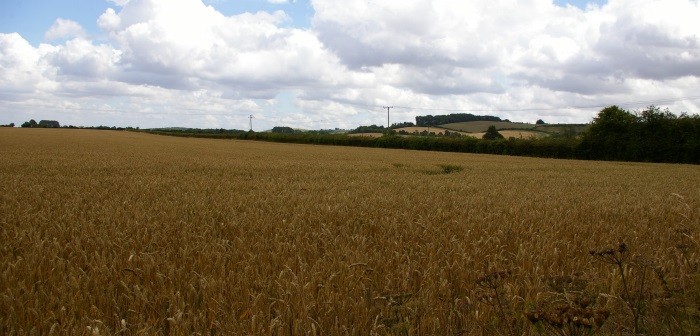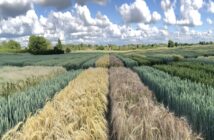Once upon a time, it was thought that crop diseases affected only crops. New research shows, however, that a common wheat virus can spread and harm perennial native grasses.
In the current issue of the Journal of Ecology, researchers from Michigan State University, University of Kansas and University of Virginia show that farmers and scientists need to think about how best to protect native plants from diseases emanating from crops.
“Crop fields were once considered tiny islands in a sea of wild vegetation, so farmers and scientists focused on protecting crops from wild pathogens,” said Carolyn Malmstrom, MSU plant biologist and co-lead author of the study. “Now, around the world, the situation has reversed, and diseases from agricultural fields affect not only crops, but also substantially harm native plants, such as switchgrass.”
The findings were based on a multi-year field study in Kansas. There, like in much of the Midwest, plains of native grasses have been transformed to fields of wheat or other cereal crops. Now, it’s the patches of grasses that are the islands in an ocean of crops.
A widespread wheat pathogen, barley yellow dwarf virus, can cross over and affect switchgrass, a prime candidate for biofuel research. The research team combined the field results with a statistical model and showed that the virus can reduce the vitality of switchgrass by 30 percent. Interestingly, the infection can affect switchgrass’ growth even though the native plant displays hardly any signs of sickness.
“Crops have been bred for yield, sometimes at the cost of plant defense. If they are susceptible, fast-growing crops can serve as highly competent hosts that amplify viruses within a region,” Malmstrom said. “In these ‘domesticated’ landscapes, farmers, conservation biologists and epidemiologists need to be aware that diseases from crops can move into wild and native plants, which may need protection.”
While the study focused on merely one virus, it shows that science needs to catch up in understanding how crops influence native plants and to build more knowledge of virus ecology in general.
“There are many mysteries surrounding how crop viruses affect natural ecosystems,” Malmstrom said. “It’s important that we build a base of research in this area. For example, if a novel virus emerges and threatens important species, we will need to draw on baseline information about virus ecology to address it; the big gaps in understanding need to be tackled.”
The research team comprised Helen Alexander, KU, Emily Bruns, UVA, and Hayley Schebor, MSU.
Malmstrom’s research is funded in part by MSU AgBioResearch and the USDA National Institute of Food and Agriculture.




